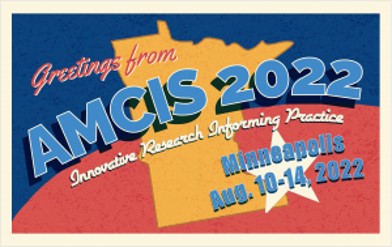SIG SI - Social Inclusion and Socio-Technical Issues
Paper Type
ERF
Paper Number
1571
Description
The Digital Divide has historically been viewed as the separation of people from technology based primarily on socio-economic issues and other demographic vulnerabilities. More recent studies have expanded research into investigating the impact of other societal structures such as the power of the government on equitable distribution of Information & Communication Technologies (ICTs) and other resources to the digitally marginalized population. While many strides have been made, educating children in the post-Covid era has made resolving the Divide a more pressing issue for students living in developing countries like Jamaica, where pre-pandemic, technology in education was still in its infancy. Using the Grounded Theory methodology, this research introduces preliminary findings demonstrating four power-relationships that have the power to and the power over effectively bridging the Divide and amongst the youngest of the digitally marginalized population and its effect on state-sponsored initiatives such as the OYOD.
Recommended Citation
Hemmings-Jarrett, Kimberley; Jarrett, Julian; Hylton, Jasmin; Williams, Shemar; and Campbell, Yanelle, "A Preliminary Examination of Power Relationships’ Influence on Reducing the Digitally Marginalized Student Population in Jamaica." (2022). AMCIS 2022 Proceedings. 10.
https://aisel.aisnet.org/amcis2022/sig_si/sig_si/10
A Preliminary Examination of Power Relationships’ Influence on Reducing the Digitally Marginalized Student Population in Jamaica.
The Digital Divide has historically been viewed as the separation of people from technology based primarily on socio-economic issues and other demographic vulnerabilities. More recent studies have expanded research into investigating the impact of other societal structures such as the power of the government on equitable distribution of Information & Communication Technologies (ICTs) and other resources to the digitally marginalized population. While many strides have been made, educating children in the post-Covid era has made resolving the Divide a more pressing issue for students living in developing countries like Jamaica, where pre-pandemic, technology in education was still in its infancy. Using the Grounded Theory methodology, this research introduces preliminary findings demonstrating four power-relationships that have the power to and the power over effectively bridging the Divide and amongst the youngest of the digitally marginalized population and its effect on state-sponsored initiatives such as the OYOD.
When commenting on articles, please be friendly, welcoming, respectful and abide by the AIS eLibrary Discussion Thread Code of Conduct posted here.



Comments
SIG SI